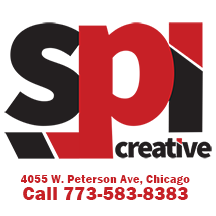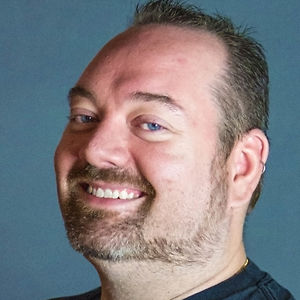ProTalk: So you are a 3D animator. What have been the three biggest challenges in your career? To add to that, you are a freelancer, what can you say you’ve learned from being a freelancer versus a regular employee?
One challenge that I am facing all the time is building my reputation. Studios and producers tend to want to work with a person they have worked with in the past or someone who was recommended to them. I have never been given a job because I asked for it. I feel you need to make yourself someone they WANT to work with. So building your reputation is VERY important. Clients want to know how good your work is, how professional you are, and how easy you are to get along with. Every interaction you have with a client can help or hurt you getting that next project. Once you prove yourself as a reliable resource for a client, they could be coming back to you for years if you’re lucky.
I love freelancing. There are those who like freelancing and those who don’t. But I think it’s an important experience especially for those just getting out of school. You get to work on very different jobs; it’s a great way to build experience fast. If you expect your 4 smoking breaks, and only work 8 hours a day then freelancing may not be for you. Clients call freelancers in to solve a problem, if you don’t make their problem your number one concern they are not going to call you back. So it can be very stressful at times. People react to stress differently, and knowing yourself is very important. I use some of that energy to help focus harder.
Money is a big deal when freelancing. With a 9-5 job you know how you’re going to pay the rent next month. Freelancing can be a scary proposition if you don’t know how manage your money. I know at least a half a dozen former freelancers who after a huge job bought cars as soon as they got their big checks. Six months later, they are driving themselves to the unemployment office. What I tell myself is “This check is not a new 70 inch TV, or a down payment on a new BMW, this is 3 months of my bills being taken care of while I look for more freelance work.”
ProTalk: Recently there has been some talk about how 3D animation and graphics are ignored by the public, which is a double-edged sword. In the one case you’re work is so seamless that it is even being used in Hollywood on dramas and non-genre type films to add and enhance certain scenes. The general public really has no clue. How do you feel about this?
Its funny it’s not just the public! When I send my reel out to some clients they ask me “okay but what parts did YOU do?” I tend to work as a One-Man-Studio, so the work that’s on my reel is almost always 100% me. I always talk about the team I worked on or the freelancers that helped me but very often I was responsible for the work from start to finish. That’s why I am starting to use before and afters in my reel. This was looked on as kinda showing off a few years ago, but now you need to actually point out what you did. I do a lot of commercials where their is NOT much of a budget to begin with. So the clients or producers want to biggest bang for their buck. They can’t afford to make a 200 foot Pinball machine, so I make them one in CG. This is what the TV viewers expect to stay interested. So I need to come up with solutions. Not all CG is about making cool robots that transform.
One time a client came up with an idea for a spot where the on-screen talent was walking past a glass wall where you can see Chicago, and images were lighting up as he walked past them. “I can’t find a location, so we are going to shoot it on green screen.” A somber spot that dealt with the pain of families facing high gas prices, was 100% CG with the talent ‘comped’ into the shot and him pointing to a 3D car at the end. Every time I show this spot I need to show the green screen footage first to prove everything else is 3d animation. So it’s not just the TV viewers, it’s clients and producers that are expecting to get anything they want.
Another aspect that you really need to think about these days to make your work stand out is strong design. What can you do to add more ‘sexy’ to the work? This is where the artist in you needs to come out. It’s not enough to just recreate a bottle in the 3D work environment. You need to go the extra mile and create a mood.
ProTalk: What is your general workflow like on any given project? I know that there are countless hours spent on design and layout. A big chunk is also rendering. How do you handle large files like that?
I learned the hard way; start your organization UP FRONT! This sounds like a silly place to start, but when I start a project I create a new folder that has about 10 sub folders for that project. All 3D files go into the “3D” folder. All After Effects compositions and edit timelines go into the “AE_Edit” folder. This way if you need to pass files to the client, or another freelancer, they can find them fast. And at 3am when your brain is not working like it should this will also help you. It also makes it easy to archive when the job is done. That’s my official kick off to a project.
TIME MANAGEMENT. This was a very hard lesson for me to learn. There is an old saying that goes “the last 10% of the job takes 90% of the time.” I take that to heart. I try to look at the whole job and see where the ‘hard part’ is. If a client says they need to job done in 4 weeks, I say to my self 2 weeks. Because your going take 12 days not 10 so your already late, then there will be changes, revisions, and the final layer of polish…and now by they way the client wants the logo BIGGER! If you use the 4-week number your doomed. So you need to get your client something to see as early as possible to manage changes and expectations.
DO THE HARD STUFF FIRST. A client I’m working with wants to see cigarette smoke burning from a hat. The client wants to see the hat, but a hat is easy. Smoke is hard. So I spend the time to look over the 3-4 apps, plug-ins, & stock video, trying to find the best way to do the smoke. So identifying what you CAN do in the TIME and BUDGET is very important.
CHOP THE WORK INTO SMALL BITES. Every job can be looked at as a bunch of mini-jobs. So a car commercial is a little editing job, a small 3D car turntable job, and a simple text animation job. I try to take one task at a time, and leave a placeholder for the other parts. This is where you need to identify if you need help, if you can bring someone in to handle some of those little jobs you may be able to get your job done faster.
RENDERING! It’s not free. It still requires a great number of hours to do all that. Time is money, especially in the 3D world.
ProTalk: What are some of your own personal projects that energize you during periods when you need that little extra push?
I love my personal projects. I feel it’s VERY important to ‘play’. How often have you been working on a project and said “It would be so much cooler if they did this…” Well no one is stopping you when it comes to your personal projects. I also used my personal projects to lean new techniques or software. Right now I’m working on a super cool car commercial for a company I don’t officially work with. But I’m really using it to test out Vray’s distributed rendering with my 5-computer home render farm. I have another project waiting in the wings that I’m going to use to lean more about he new version of Realflow. But finishing the project in this instance is not the point, as long as I learn something new and had a fun time doing it then it was a success.
Keeping your creative juices flowing is very important. Look at the work of your co-workers or peers. Surf on Vimeo at least once a week looking for cool stuff. I have a link on my browser bar (http://www.thisiscolossal.com/) It’s is nothing but crazy art projects and cool design. Whatever your interests are make time to re-charge your batteries.
A strategy that I adhere to, to help prevent burnout is to limit your personal projects. You can have one personal project that directly relates to your professional work, one project that you can use for work but is not directly related to your current work (learning web programming), and one project or activity that has NOTHING to do with your work (mine is playing pool). If you spread your personal time between all three, you can slowdown your eventual burn out.
proTALK: You can check out Ryan’s work at 3DDuff.com




 Professional Media Creative Services since 1994
Professional Media Creative Services since 1994
We’re Very Social